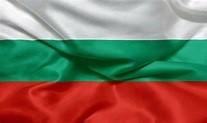
The Balkans have always seemed rather mysterious. As I was growing up, Marshall Tito’s Yugoslavia was an independent socialist state comprising the republics of Serbia, Bosnia and Herzegovina, Croatia, Montenegro, Macedonia, and Slovenia. Tito ruled this relatively stable country from 1943 until his death in 1980 after which it fragmented – or ‘balkanised’ – leading to the break-up of Yugoslavia along its former borders and the infamous wars between 1992 and 1995.
As for Albania, it became a communist state after WWII, a pariah state, ruled by Enver Hoxha (pronounced ‘Hodger’) from 1944 until his death in 1985. It became isolated from everyone. I remember sailing between Brindisi and Corfu once and someone warning the captain and crew not to sail too close to Albania because its gunboats had been pursuing some yacht recently that had strayed too close to its coast.
Greece occupies the southern part of the Balkan peninsula, Slovenia the northernmost part and Bulgaria the easternmost, though some definitions of the Balkans include parts of Turkey and Romania. Kosovo also belongs to the Balkans but is not, as yet, recognised as an independent country by all the EU states and only by around half of the United Nations.
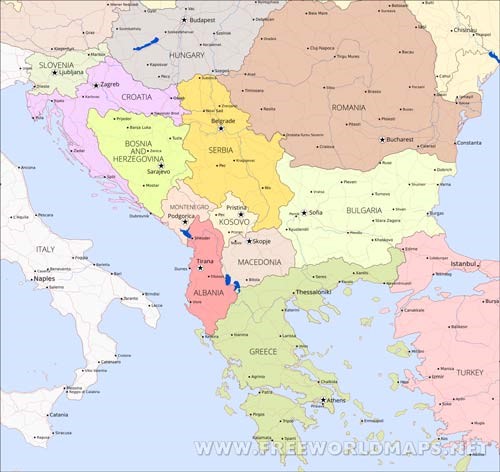
Anyway, for this next adventure of mine I rather fancied visiting some of these independent republics of the Balkans with their rich, complicated and tricky histories. Along with Sofia, Bulgaria, I was to visit those of the so-called Western Balkans: Serbia, Bosnia and Herzegovina, Croatia, Montenegro, Albania and North Macedonia, all of which were part of the former Yugoslavia. All these states were part of the Roman empire from the 1st to 6th centuries AD, all invaded by Goths and Huns, followed by a period of settlement by the Slavs. Then came the all-conquering Ottomans, who ruled them for about 500 years, beginning with Serbia in 1389, and finally Albania about 100 years later. And then the Austro-Hungarians, who ruled some of them, at one time or another, between 1867 and 1918.
Present day populations consist of various ethnic and religious groups. Most Bulgarians and Serbs, for example, are Eastern Orthodox Christians, most Croats Roman Catholic, and most Bosnians and Albanians Muslims. But they coexist – happily or not – and within each country one can find a mix of mosques, Orthodox and Catholic churches, and sometimes Jewish synagogues side by side.
Sofia
The tour begins in Sofia, Bulgaria’s beautiful capital. Not sure why it starts here as we are scheduled to leave for Belgrade on day 1. Anyway, the Birmingham to Sofia flight that I somehow happen upon is via Istanbul. Not the most sensible way to get here: going way east only to return many miles west again. The rather nondescript hotel near the airport serves noodles and large ‘shrimp’ for dinner and I sample a large glass of Bulgarian red. Not so bad then. The accommodation is of a good standard too.
In the breakfast room next morning a robot, enlisted to assist the staff, is transporting crockery. Loses its sense of direction and bumps into a trolley sending a load of white porcelain crashing onto the floor. Whoops. More crockery smashes to the ground before one of the staff intervenes. Over reliance on technology perchance. Not so muffled laughter from the clientele.
As has become my usual habit, I have booked an extra day in order to do some exploration before the tour starts. Hotel being some way out of town, I get a taxi to the centre, alighting at a metro station. I actually want to visit Serdica, the ruins of the ancient Roman city, but the driver doesn’t seem to know where it is. Odd, seeing as said ruins were found while building the metro system in 2010-12.
No matter. I soon find myself pursuing a pathway towards the golden domes of Alexander Nevsky Cathedral. Named after a Russian warrior Prince. I have been here before but it is no less splendid for that. It is awesome, built to honour 200,000 Russian soldiers fighting for Bulgarian independence from the Ottomans in the Russo-Turkish War (1877-78). Troops were Ukrainian, Moldovan and Finnish as well as Bulgarian. The Cathedral was completed in 1912 and is the biggest in the Balkans.
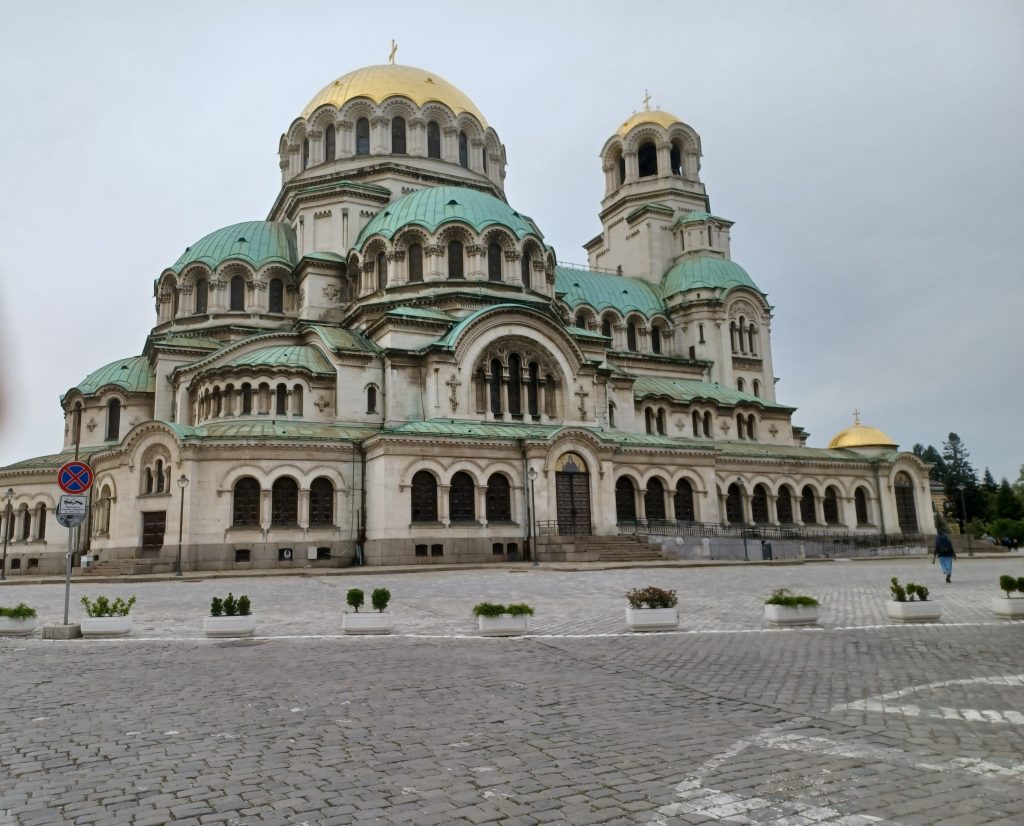
I enter and stroll across the shiny marble floor. A priest stands conspicuously with a silver salver, expecting donations. I oblige and receive a blessing on my forehead. To the left of the altar is a display case with Alexander Nevsky’s relics. Massive candlelit chandeliers hang from the ceilings.
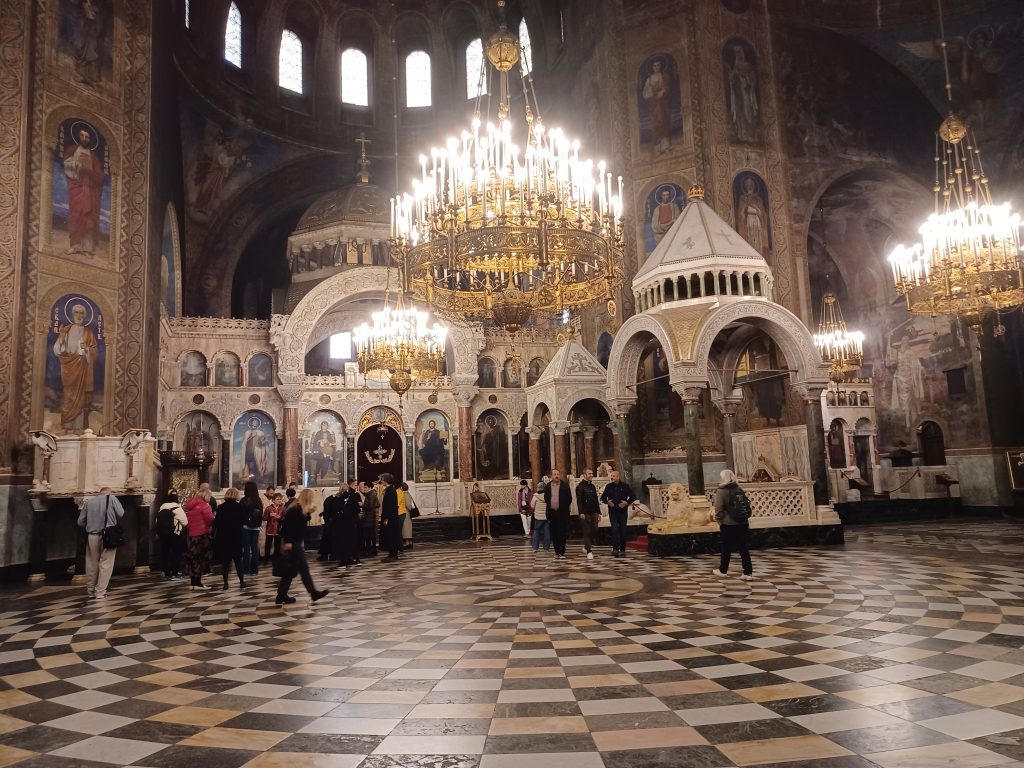
The walls are graced with stunning mosaics and frescos, several depicting stories from the New Testament, while a fresco on the ceiling features a golden sun spreading its rays in a blue sky. All of which gives one an uplifting feeling of goodwill towards one´s fellow man/woman and all that.
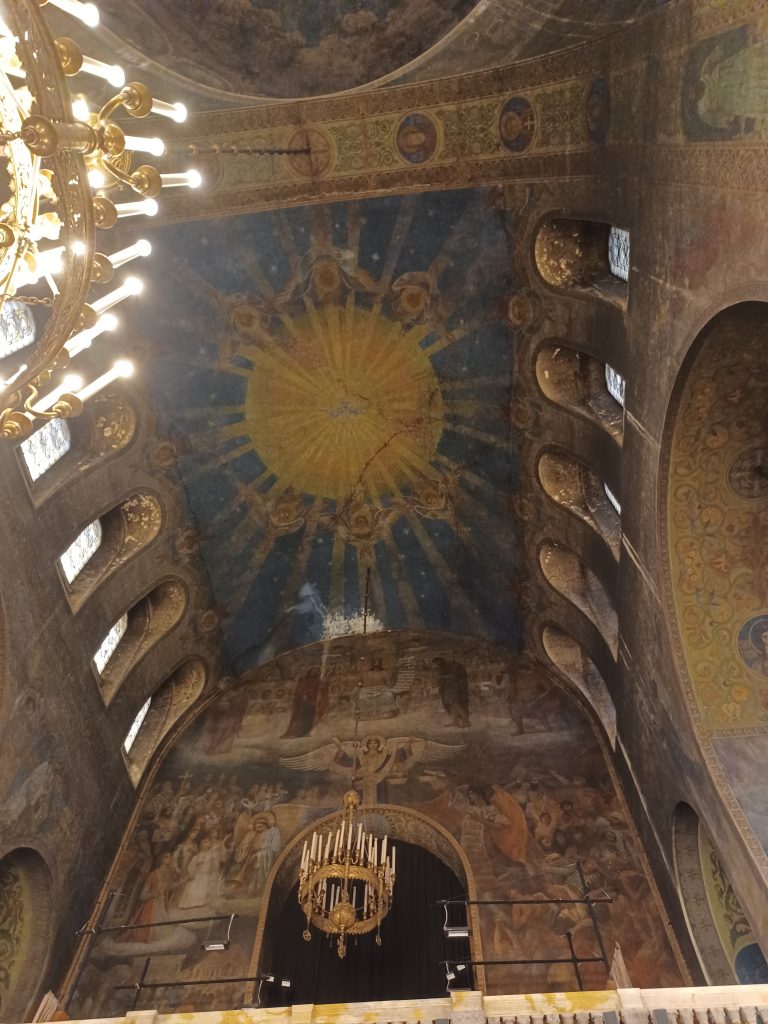
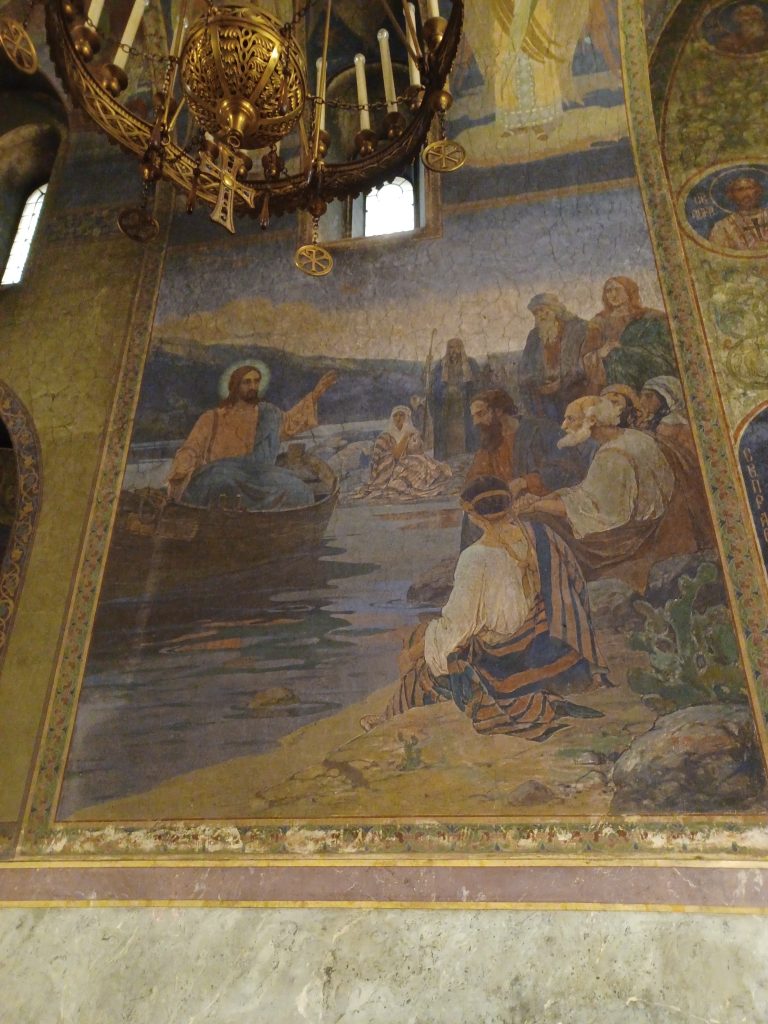
Linger for some while until, sated with magnificence, I amble off to look at the 4th century Basilica of St Sofia adjacent. This is Sofia’s oldest church, according to the plaque, and gave the city its name. Several churches have been built on this site, I read, the first within the complex of ancient Serdica in about 311 AD.
It was turned into a mosque during Ottoman rule but since then has functioned as an Orthodox church. Outside is an eternal flame below three arched windows. A wreath of lilies lies in front of the tomb of the unknown soldier, commemorating the thousands of Bulgarians who died defending their country.
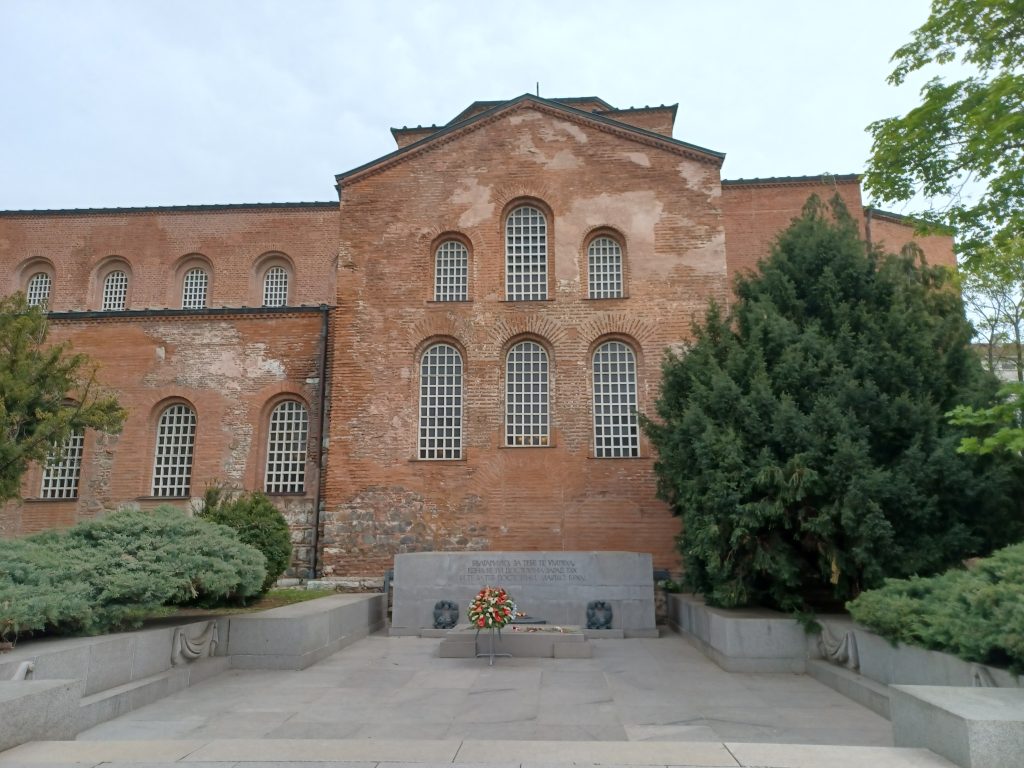
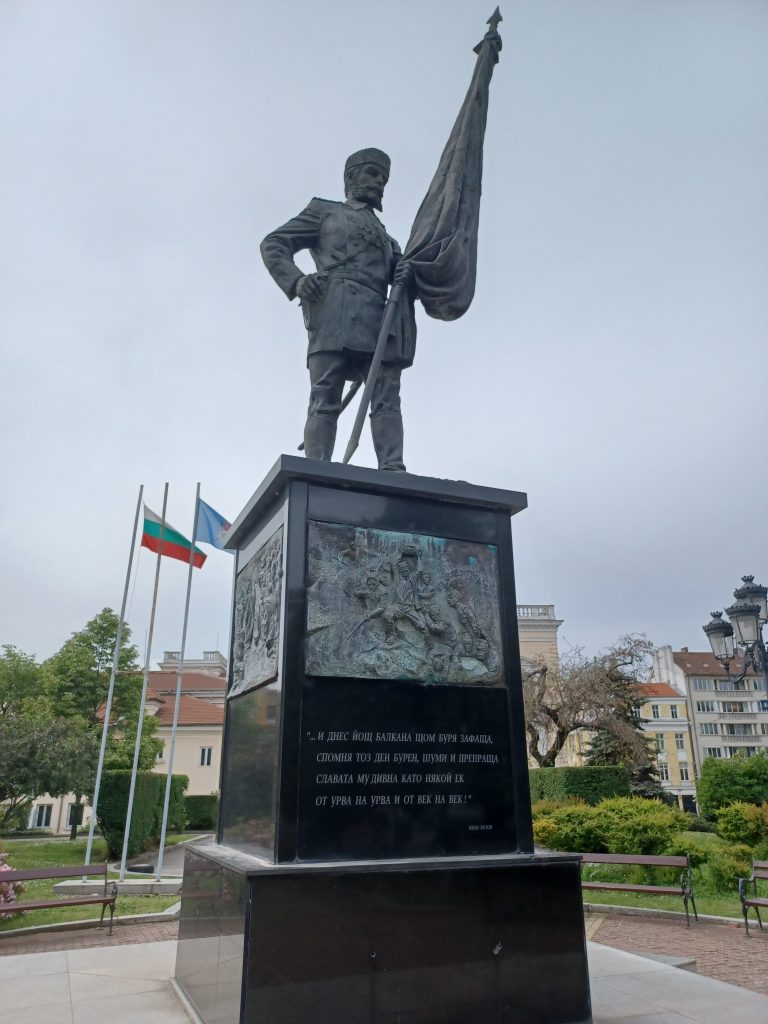
Potter along the cobbled area in front of the cathedral where locals are selling military memorabilia, such as helmets and medals from the wars. There is a grassy area here containing various artworks, such as the 7 metre high bronze Monument to Bulgarian Volunteers, who fought with the Russians against the Ottomans in 1877-78. The Bulgarian flag with its white green and red horizontal stripes flies in the breeze behind. Wander off again. Someone bawling into a microphone disturbs the tranquillity and I head across the intervening space in the direction of the noise.
It emanates from the lovely Neoclassical National Theatre, which is named after Ivan Vazov, a famous Bulgarian author, playwright and poet, known as the Patriarch of Bulgarian Literature. A lady is preaching at full volume in front of the theatre, hoping for converts to her faith, no doubt. But, thankfully, soon after another young lady takes to the floor.
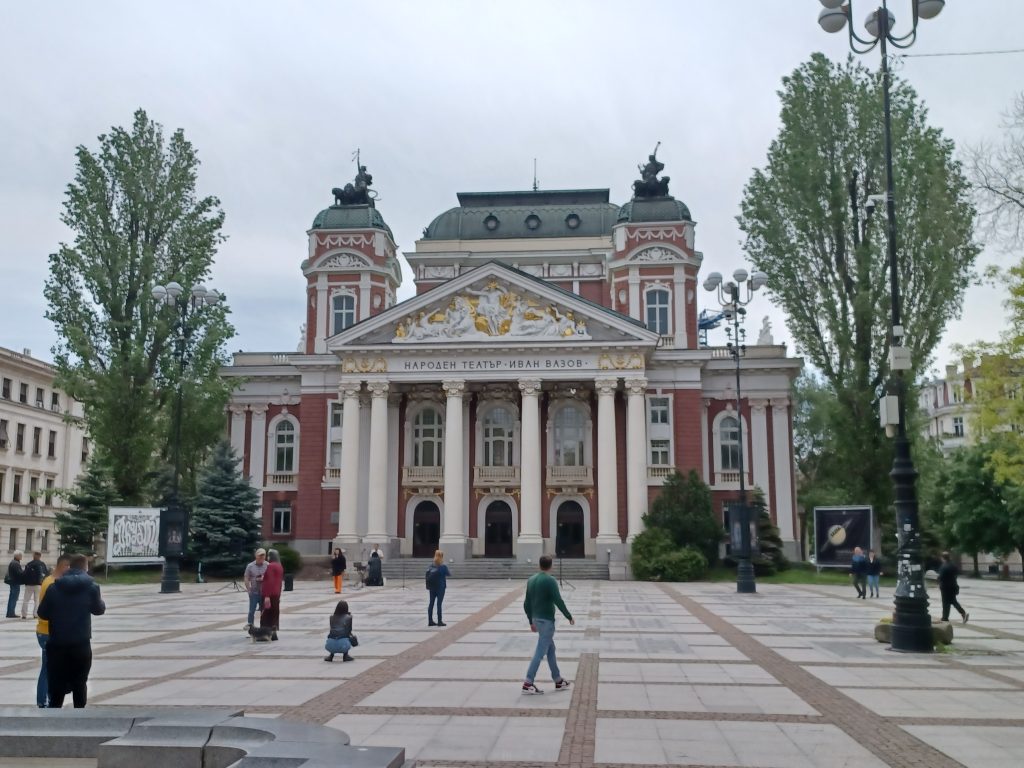
Sultry singing to a backing track. Sweeter. I hang around for some while listening before resuming my explorations. Another green dome of another church appears in the distance. As I wend my way towards it, I am stopped in my tracks by the sight of a stoutish building, the façade of which is covered with children’s drawings interspersed with old photographs of famous people and some of their quotations.
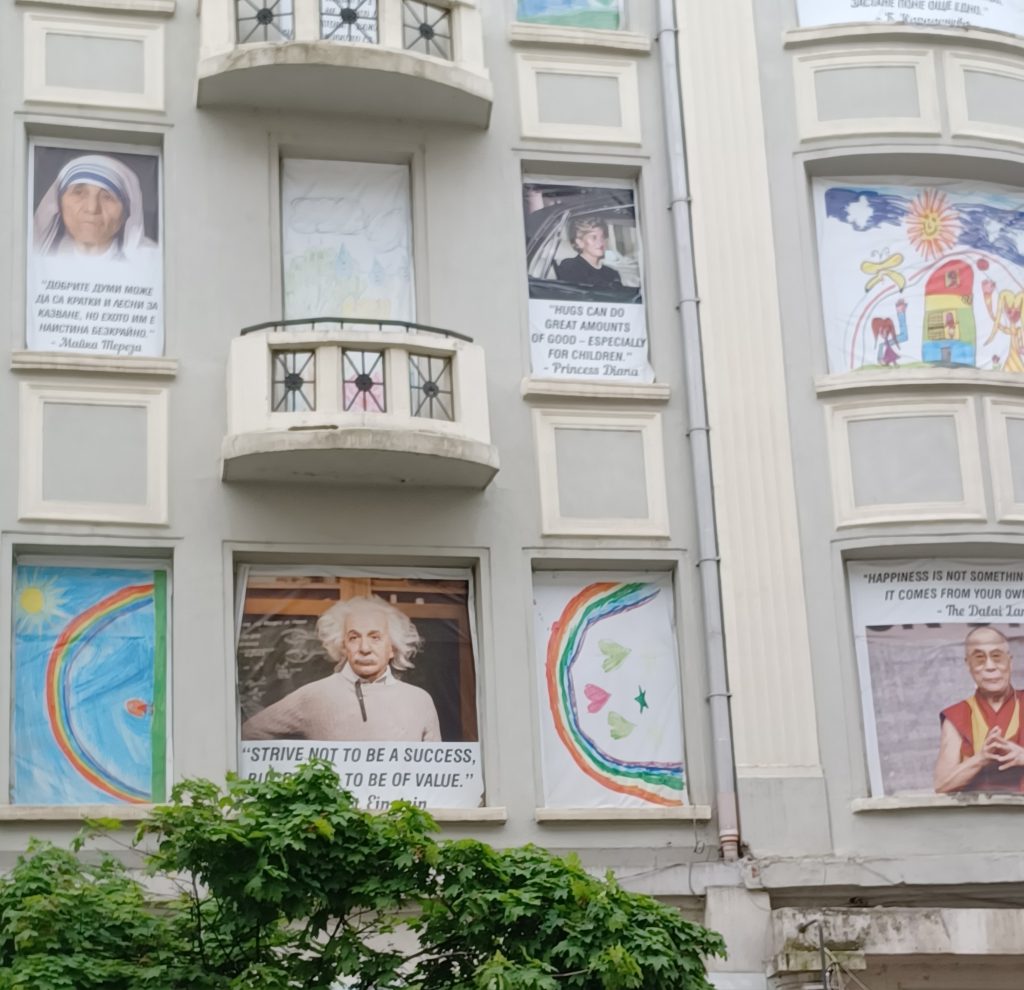
The late Princess Diana declares that “hugs can do great amounts of good – especially for children”; the Dalai Lama that “happiness comes from our own actions”, while Einstein opines that we should “strive not to be a success” but rather “to be of value”. The building evidently has some high moral purpose. Mother Teresa has something to say too, but this is written in the Cyrillic script. And I can’t read it.
Am again diverted as, down a short street to the right, yet another church, an old round one, can be seen in the middle of a rather grand square. In fact this trip could almost be said to be a pilgrimage, I frequent so many churches, both here and in the other Balkan countries. Head to investigate. Turns out to be the fourth century St George Rotunda. Built of red brick, it is situated amidst the ruins of the ancient Roman baths of Serdica. No photography allowed inside. The booklet tells me that this is the oldest church in Sofia, although that honour, or so I was led to believe, belongs to the Church of St Sofia, next to the Cathedral. A beggar occupies the gateway, paper cup extended. Quite a few beggars here. I drop some coins in the cup.
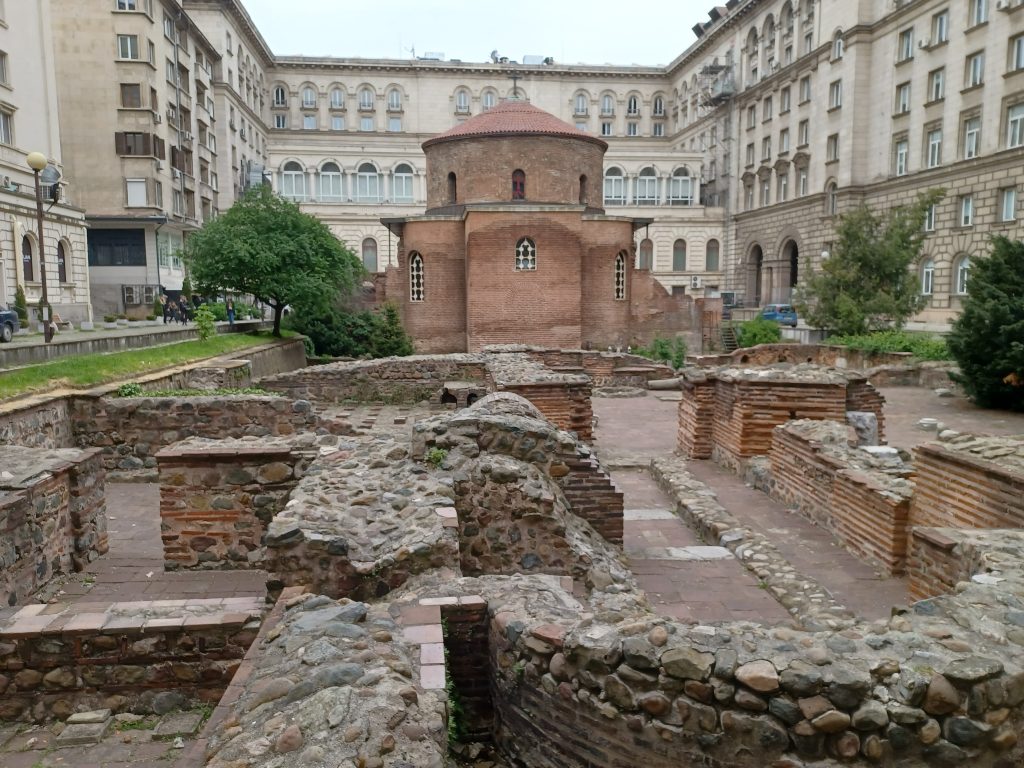
Anyway, I reach the church to which I was formerly heading, the one with the green dome. It is called the Sveta (Saint) Nedelya, an Eastern Orthodox church built in the tenth century, though much modified since. It was once the Cathedral before that of Alexander Nevsky usurped its position. Glorious inside. Some baptisms are going on. Smartly dressed Bulgarian couples with their babies are waiting patiently for their turn. A choir sings from the balcony. Smells of incense. More beautiful frescos adorn the walls. Outside a sign informs readers that in April, 1925 the church was ‘blown up by a group of communists whose aim was to assassinate H.M. Boris III’. Many people were killed. Restored in 1931.
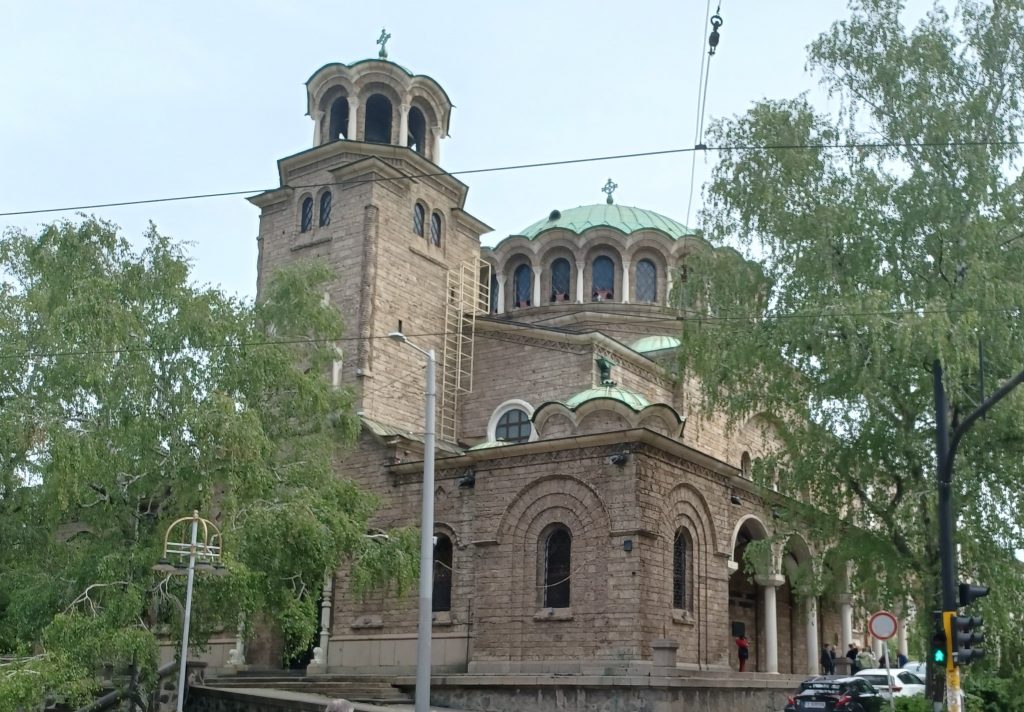
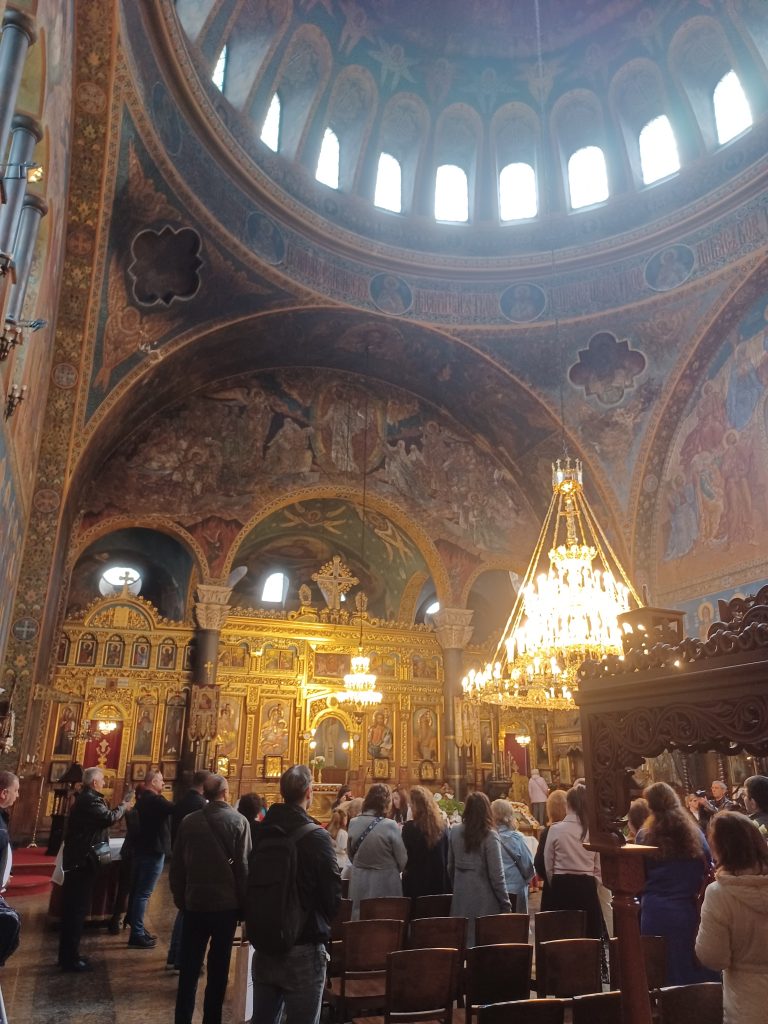
In Sveta Nedelya Square, a large intersection at the centre of the city, rises the eight metre high statue of Sveta Sofia on a 16 metre granite pedestal. It replaced that of Lenin (removed in 1991) and was installed for the millennium. Perched on Sofia’s arm is an owl, symbolising wisdom, on her head a golden crown, symbolising power, and in her right hand a laurel wreath, symbolising fame.
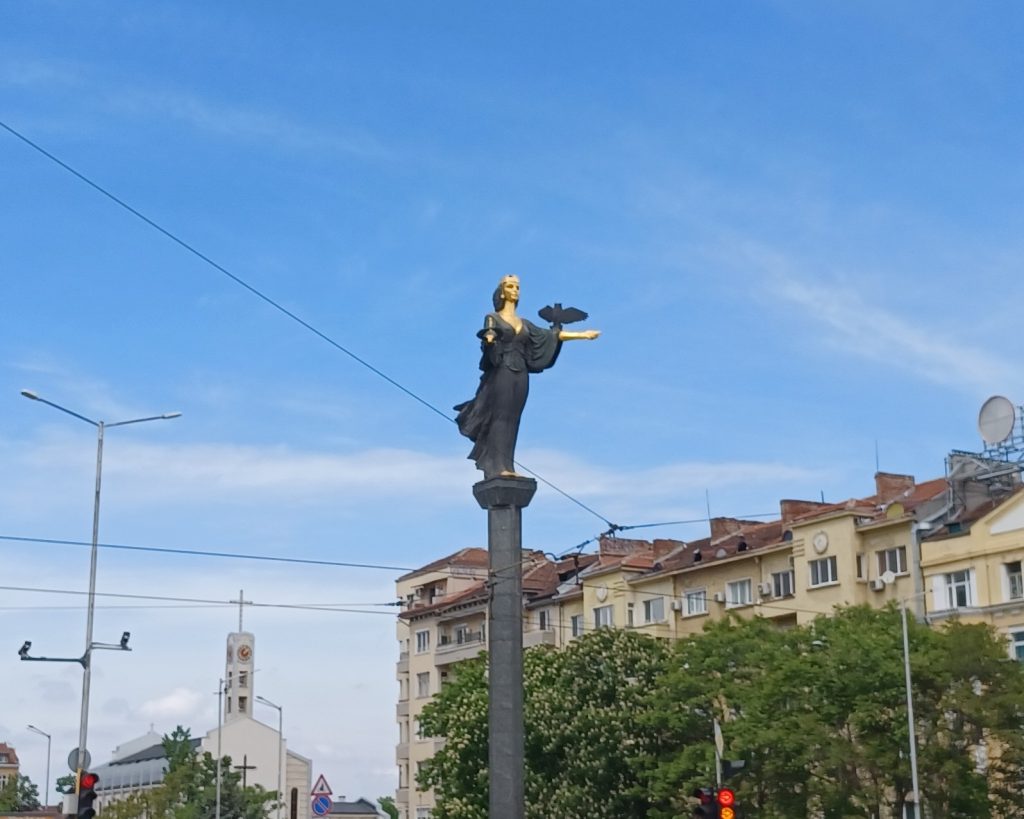
The Sveta Sofia statue is close by the newish metro station, in which are to be found some remains of the Roman town of Serdica which, as before mentioned, were revealed whilst excavating for the metro in 2012. The ancient paved Roman road and stumps of columns now form part of it. A unique metro station. Further on and outside are courtyards and remains of mosaics leading up to the Banya Bashi mosque. The Muezzin is calling the faithful to prayer as I approach.
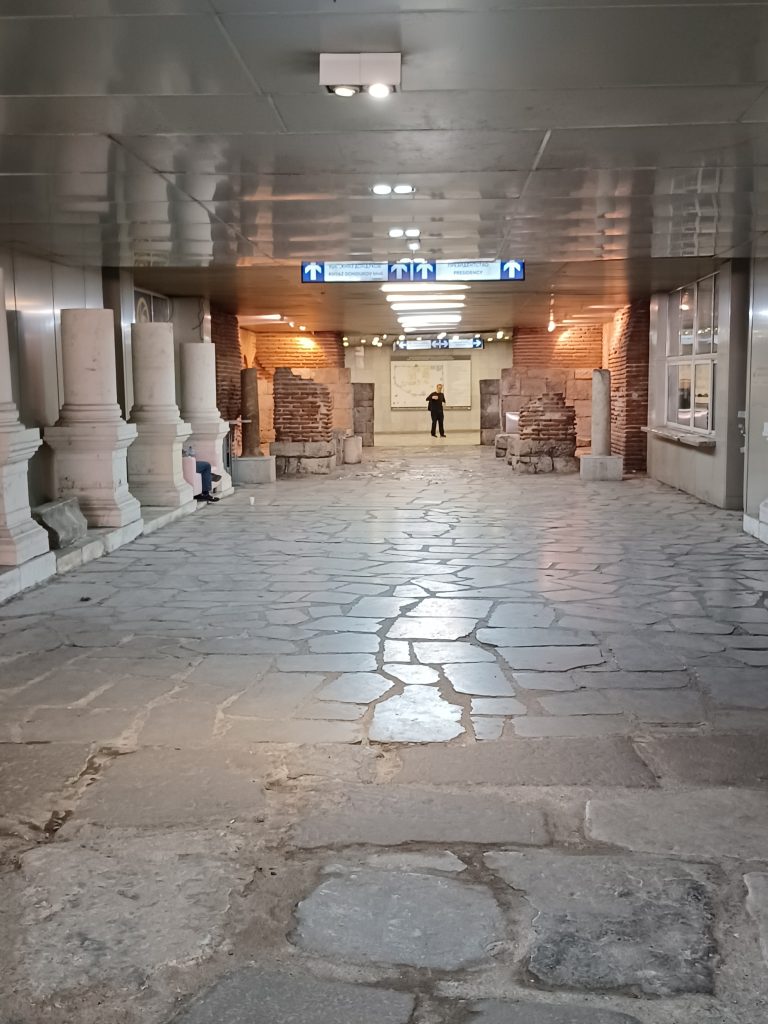
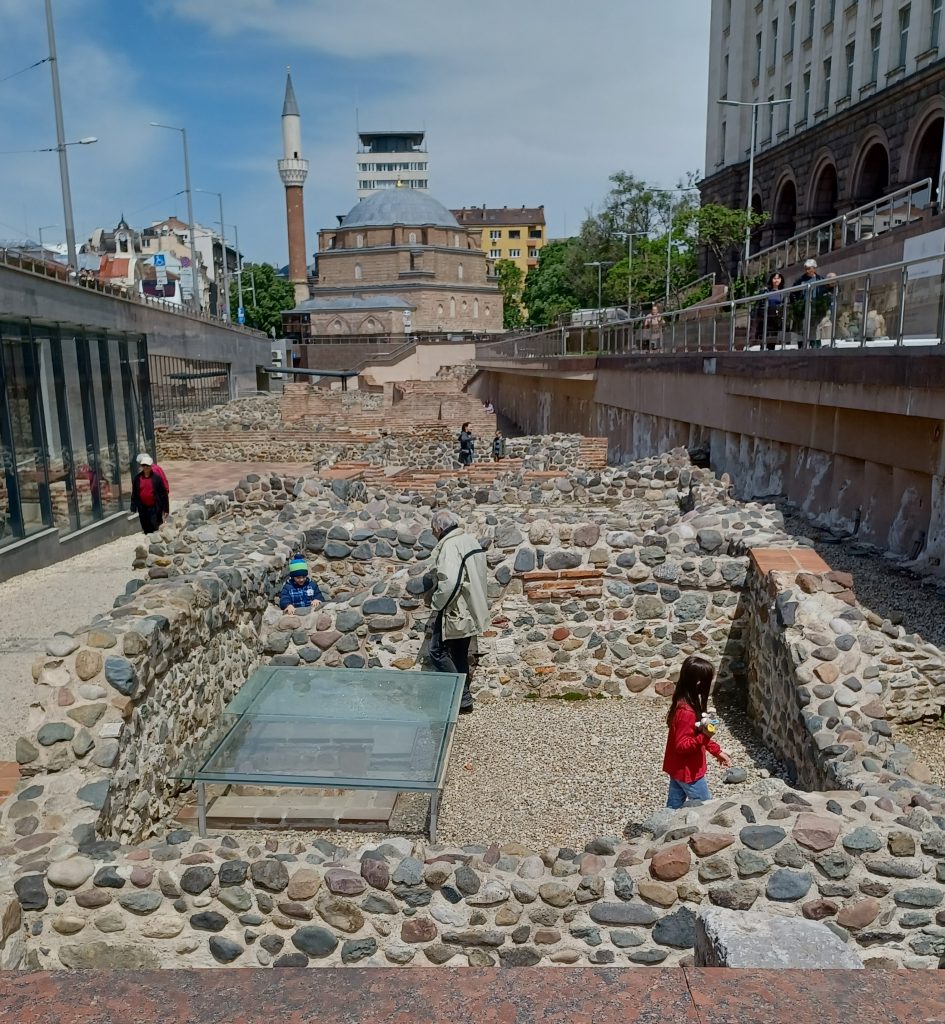
The splendid mosque sits on one side of a park with grass and flower borders. Close to it is the Central Market Hall with its clock tower.
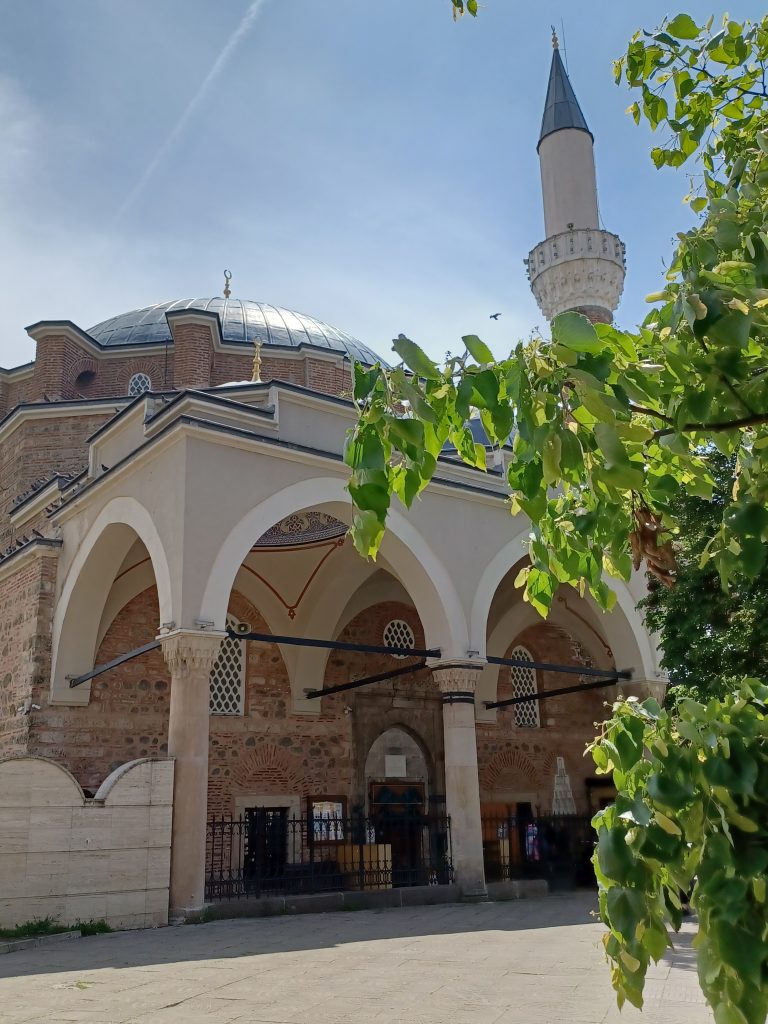
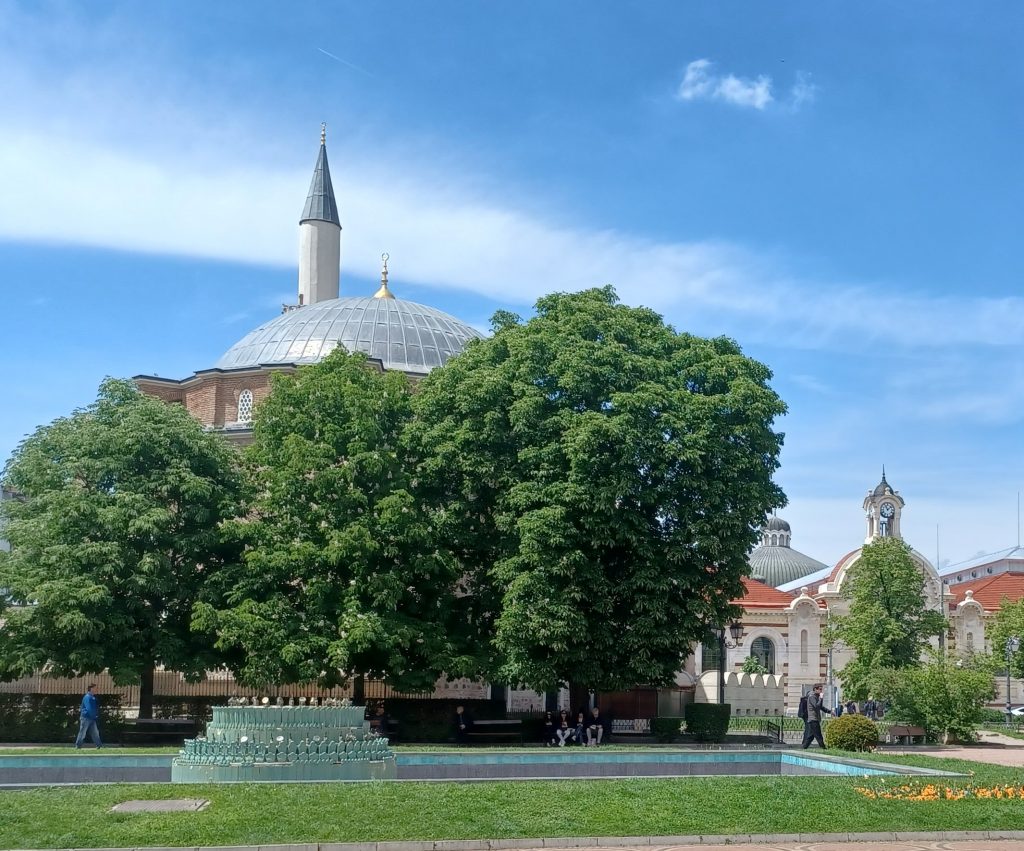
At the other side of the park is the yellow painted Regional History Museum. The building used to house the Central Mineral Baths apparently but was converted into a museum. This would be interesting but not enough time to visit today. Also in the park is a bust of Thomas Woodrow Wilson, the USA’s 28th President (1856-1924), around which a load of pigeons are flocking. Not at all sure why President Wilson is here but some fellow is scattering birdseed so it is not surprising that the pigeons are.
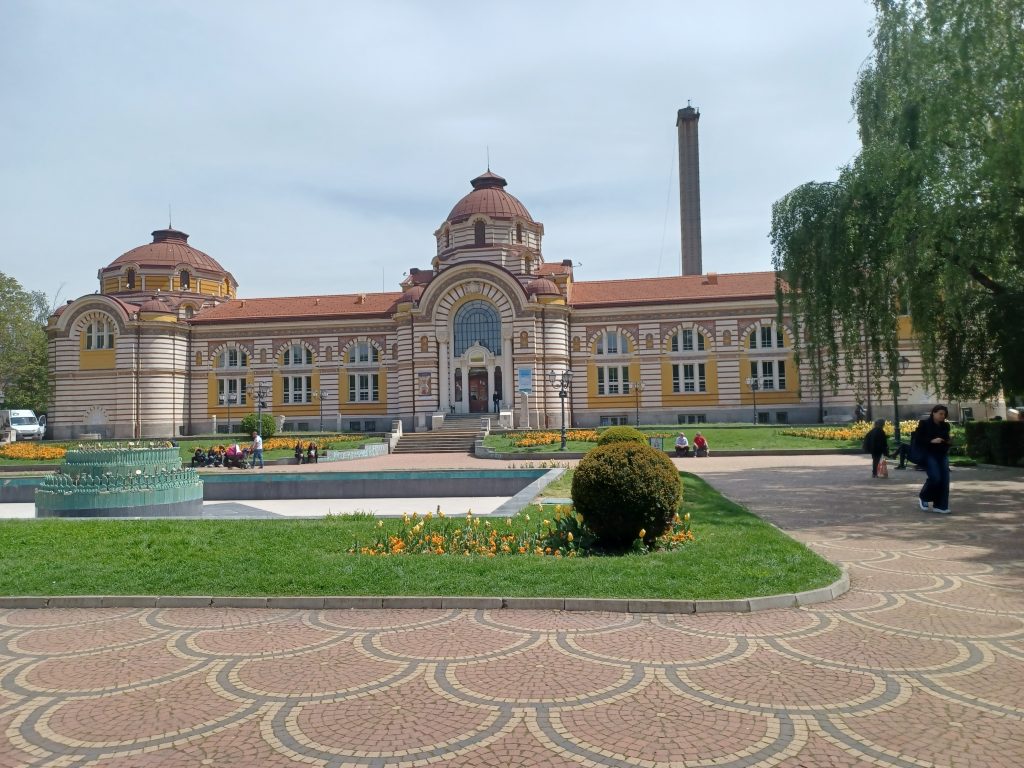
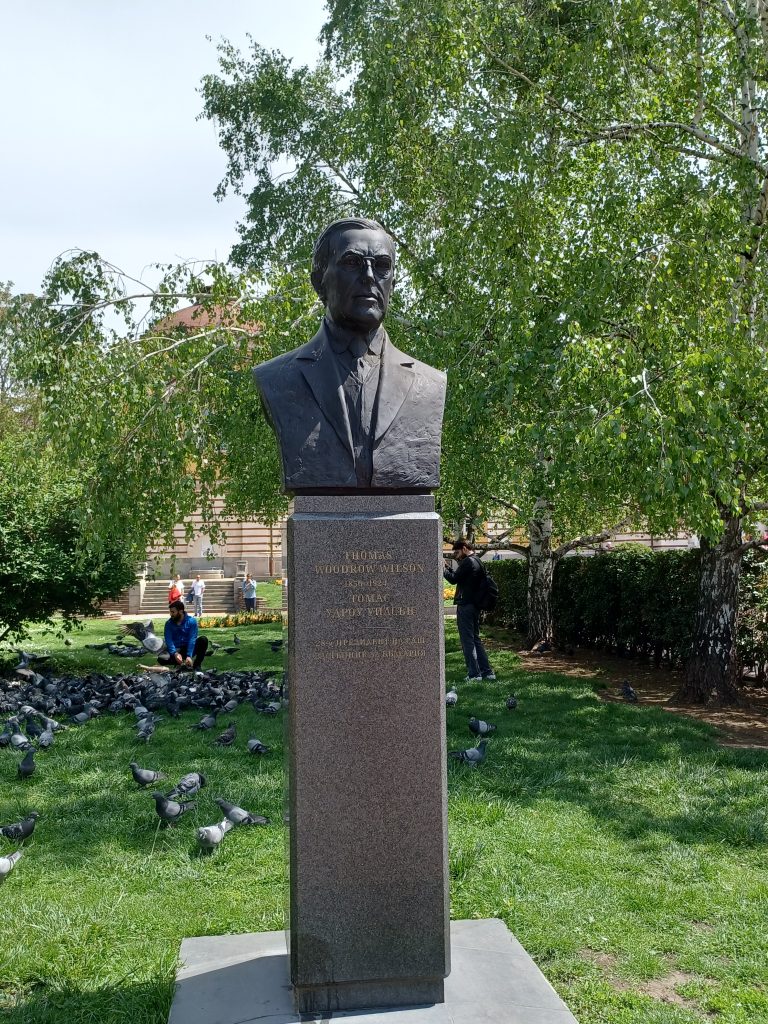
It is well past lunchtime. Time to seek out an appropriate eatery. Find one. Good stuff. Enticing looking place with a few trees rustling over the courtyard. Order aubergine stuffed with minced lamb, a large glass of red and some Perrier. Don’t want to be staggering round this afternoon. As I relish the fare and people watch, two elderly Bulgarian ladies exit the restaurant on the top of the few steps. Must be a special occasion. Dyed hair well groomed. One is wearing a purple and pink jacket and a kind of lacy garment over a skirt and matching purple shoes. Crinkly stockings drip round her ankles. The other is in floral dress with white shoes. They are soon joined by two other female personages similarly attired and take a table outside, all smoking, next to mine. One blonde, two brunettes and a blue rinse. Meanwhile some young ladies in blue jeans enter the courtyard with phones in their back pockets and designer bags. The old guard and the new. Smoke from four cigarettes wafts in my direction. Finish my wine right speedily, call for the bill and take my leave.
The last church I am to see today is that of St Nicholas the Wonder Worker, a gorgeous Russian Orthodox church with its onion domes. Funds for its construction were provided by Tsar Nicholas II, a sign post tells me. Built in the early 1900s. In the crypt lies the grave of a certain Archbishop Seraphim Sobolev, who was believed to work miracles. Many people still believe that help can be sought from him and leave letters next to his grave.
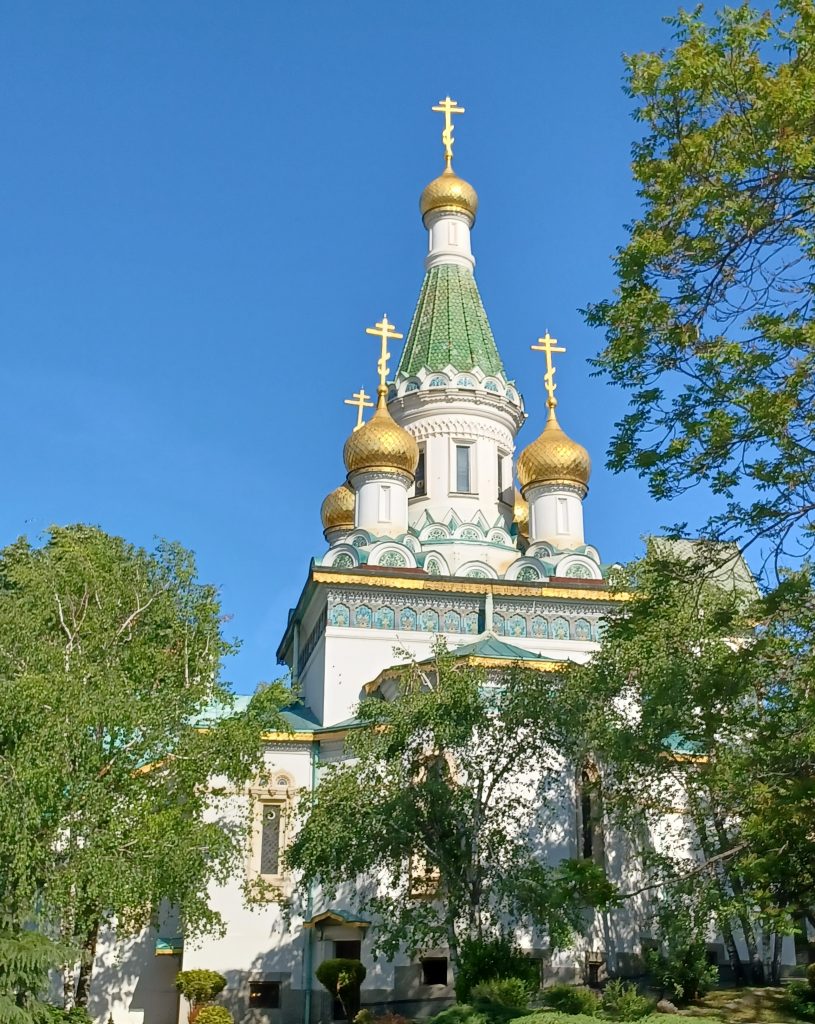
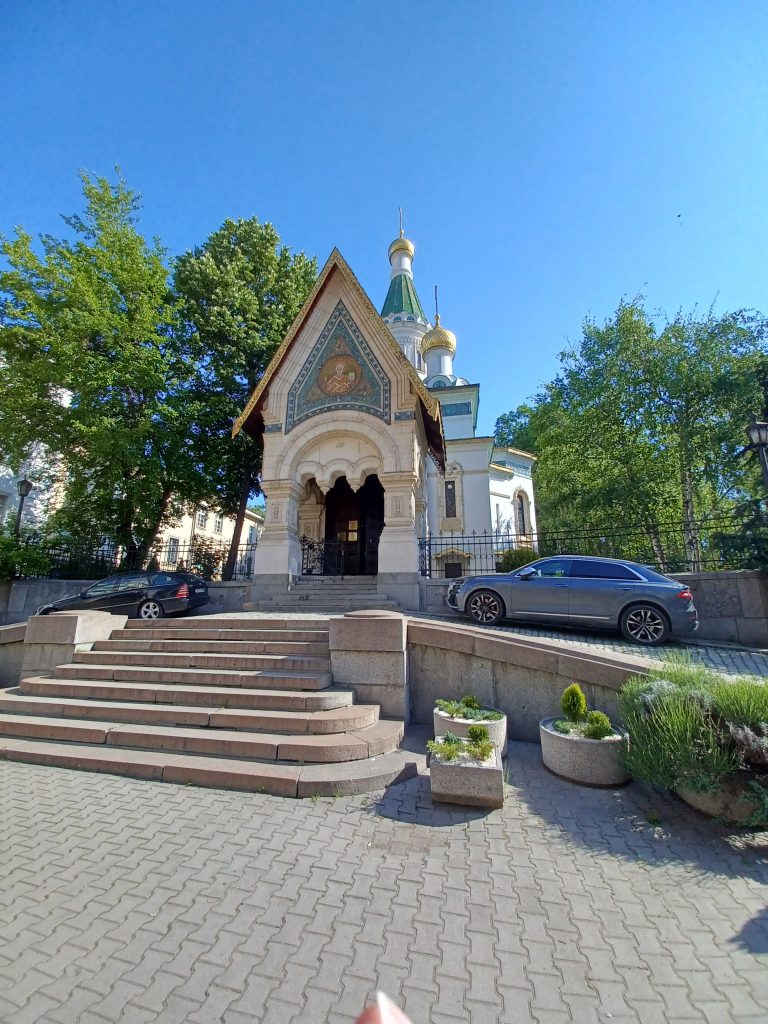
Time to head back to my hotel now. I pass some interesting street art with a large red dragon and large grey man with a spear. Then arrive at the large square with equestrian statue to the Tsar Liberator Emperor Alexander II, who liberated the Russian serfs in 1861. It sits on a plinth of black granite from Mount Vitosha, Sofia’s mountain.
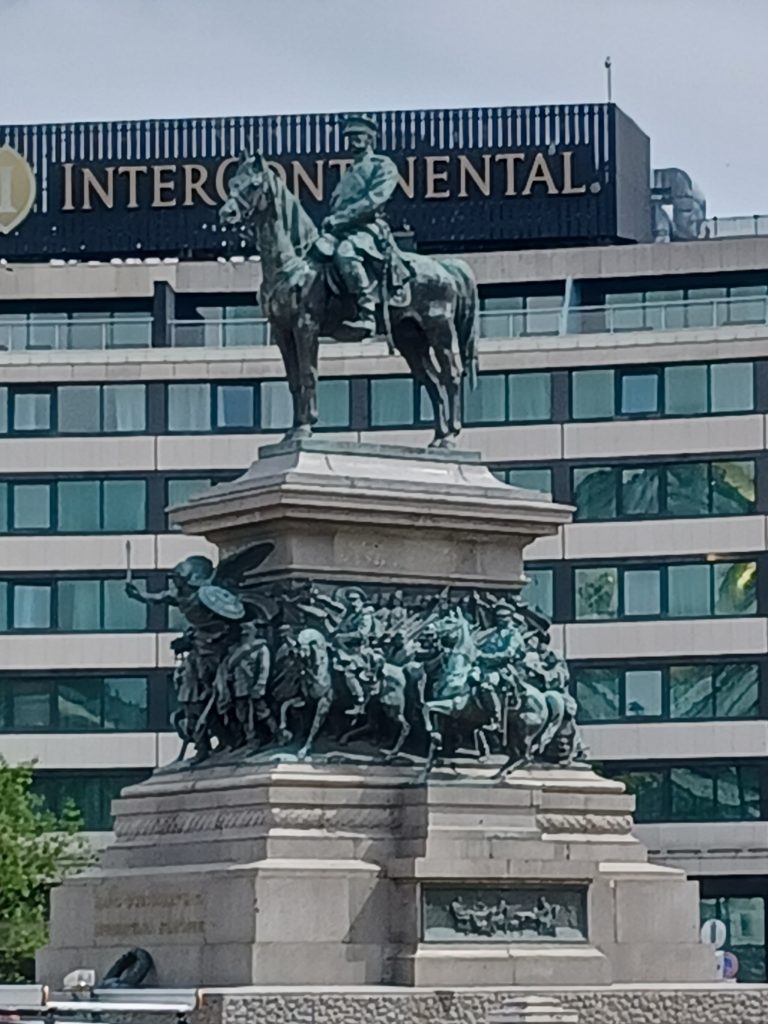
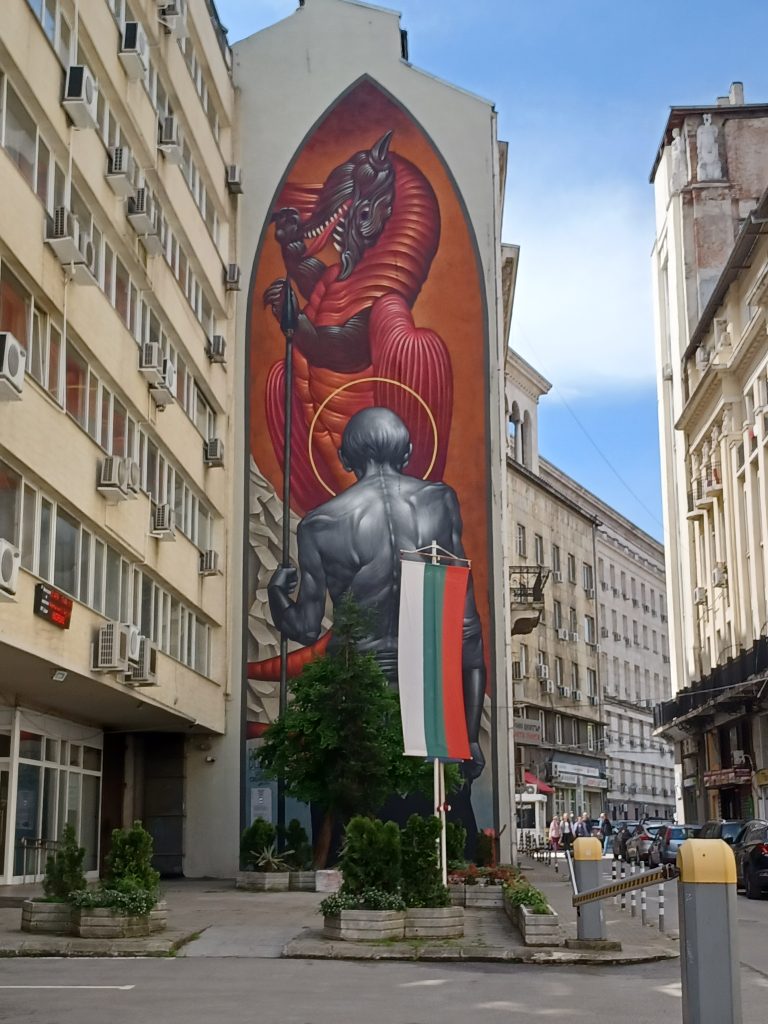
Thence to the hotel to meet the tour guide and the rest of our group for the next two weeks. I like Sofia. It is packed with fascinating monuments and buildings. Some regret leaving.

Leave a Reply